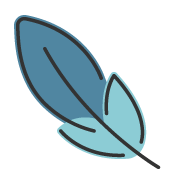布局插槽
概述
主题通过 <Layout /> 提供了 丰富的 布局插槽,可以通过这些插槽,在 页面 的不同位置注入内容。 以便用户可以个性化的使用主题。
使用
首先,需要创建一个 客户端配置文件: .vuepress/client.ts:
import { defineClientConfig } from 'vuepress/client'
import Layout from './layouts/Layout.vue'
export default defineClientConfig({
layouts: {
Layout,
},
})然后,创建一个 .vuepress/layouts/Layout.vue,作为布局插槽的默认组件,在该组件中引入 当前主题的 <Layout /> 组件。
<script setup>
import { Layout } from 'vuepress-theme-plume/client'
</script>
<template>
<Layout>
<template #page-bottom>
<div class="custom-content">
自定义内容
</div>
</template>
</Layout>
</template>
<style>
.custom-content {
width: 100%;
}
</style>也可以使用 渲染函数 实现注入内容,在 .vuepress/client.ts 中:
import { defineClientConfig } from 'vuepress/client'
import { h } from 'vue'
import { Layout } from 'vuepress-theme-plume/client'
import CustomContent from './components/CustomContent.vue'
export default defineClientConfig({
layouts: {
Layout: () => h(Layout, null, {
'page-bottom': () => h(CustomContent),
}),
},
})插槽
主题支持以下插槽:
当
pageLayout: doc时:doc-topdoc-bottomdoc-footer-beforedoc-beforedoc-aftersidebar-nav-beforesidebar-nav-afteraside-topaside-bottomaside-outline-beforeaside-outline-after
当
pageLayout: page时:page-toppage-bottom
在 博客页 中 (包括 文章列表页、标签页、归档页 均适用):
blog-topblog-bottomblog-aside-topblog-aside-bottomblog-extract-beforeblog-extract-after
在 博客文章列表页 中:
blog-post-list-beforeblog-post-list-afterblog-post-list-pagination-after
在 博客标签页 中:
blog-tags-beforeblog-tags-after
在 博客归档页 中:
blog-archives-beforeblog-archives-after
总是启用:
layout-toplayout-bottomnav-bar-title-beforenav-bar-title-afternav-bar-content-beforenav-bar-content-afternav-screen-content-beforenav-screen-content-after
